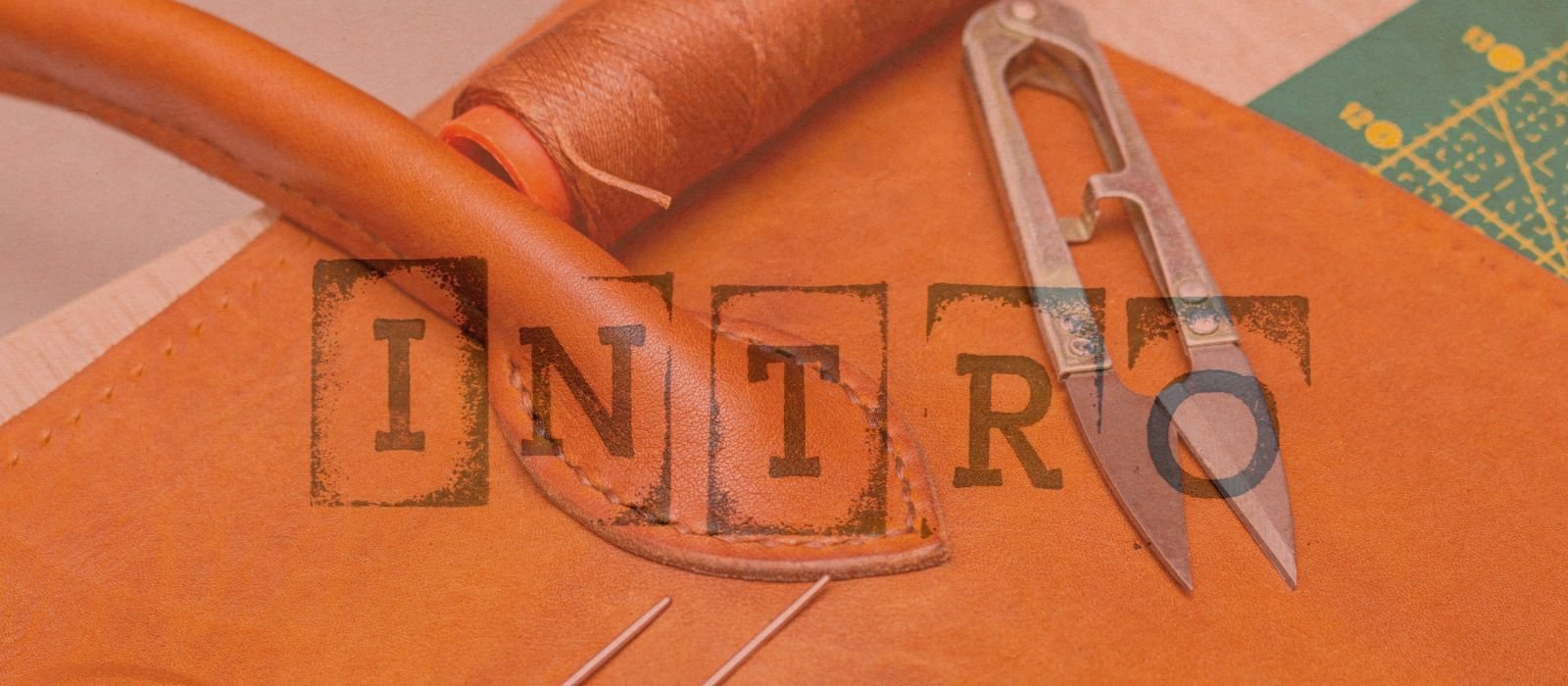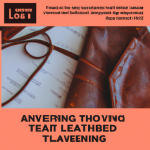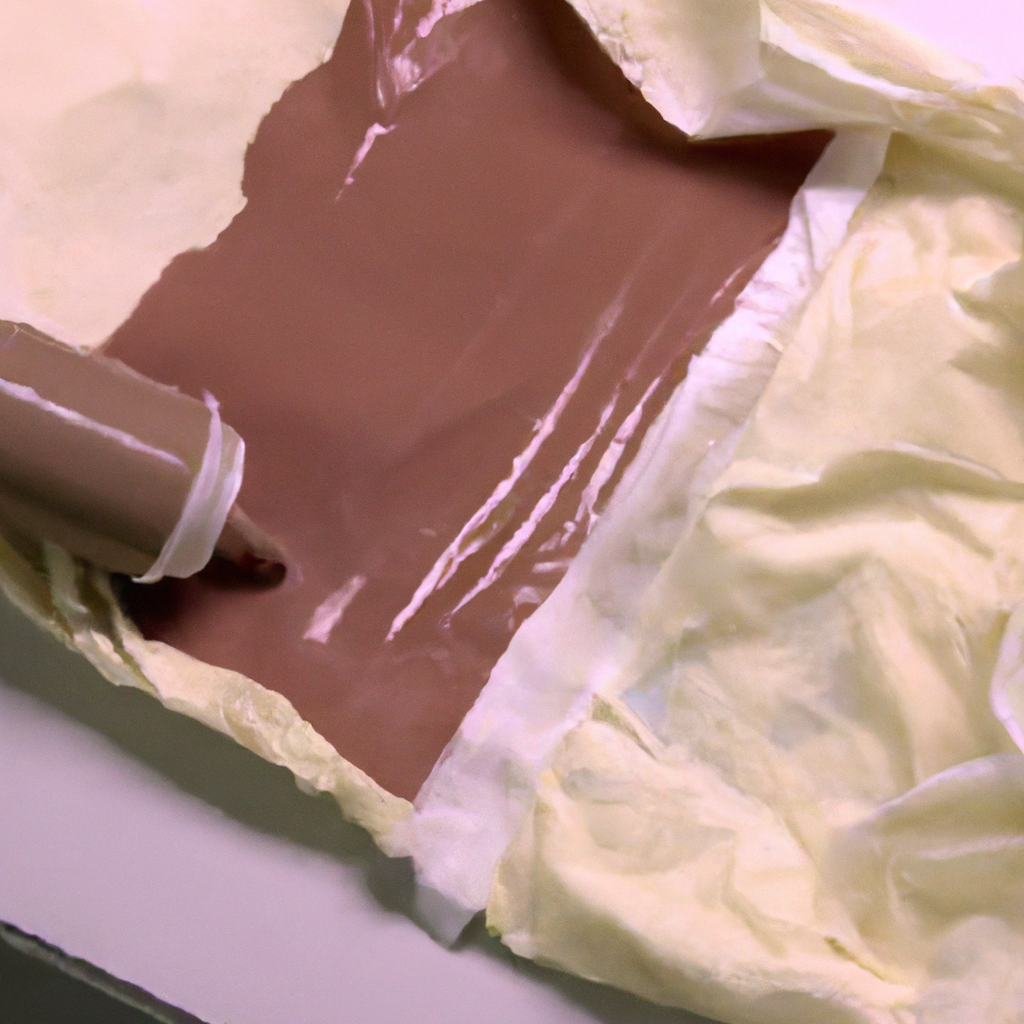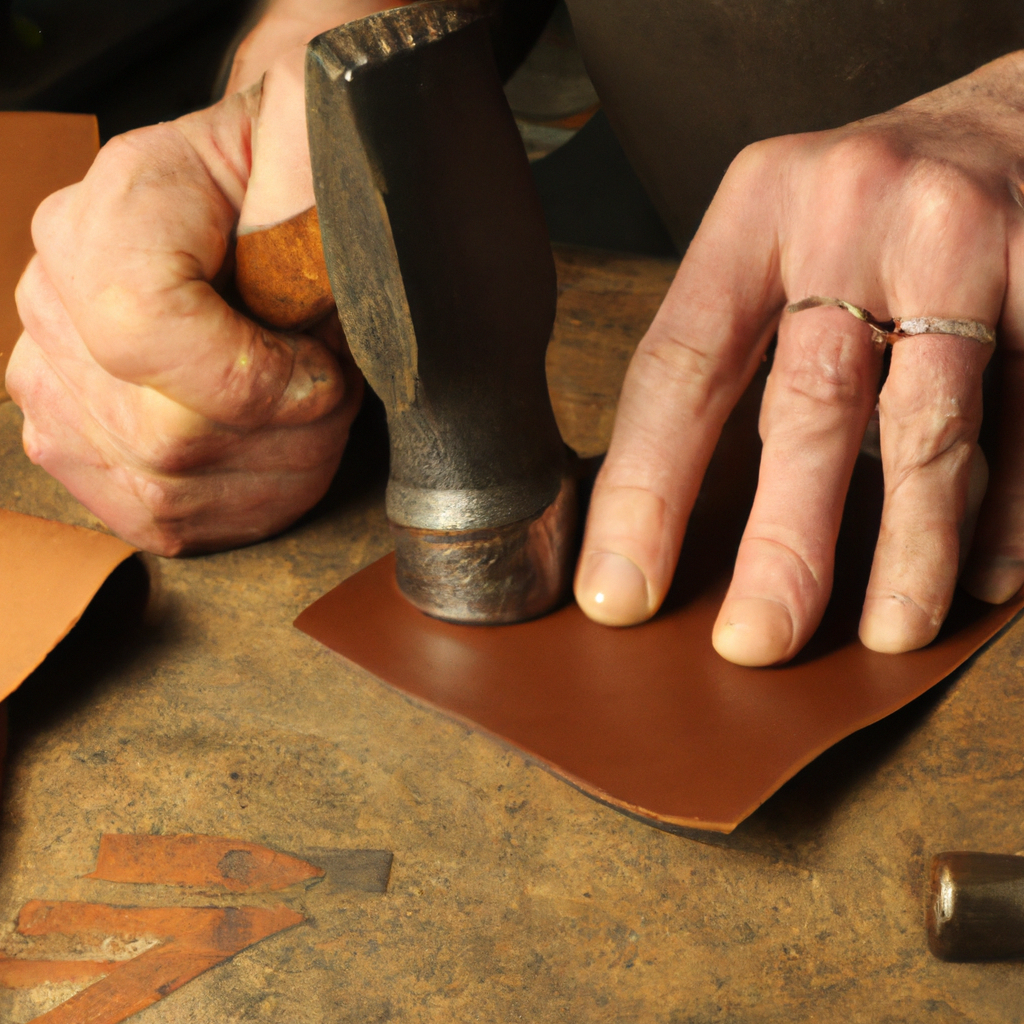So, you’re passionate about leathercraft and you’re constantly searching for ways to come up with those eye-catching designs that will set your products apart from the rest. Well, fear not, because in this article, we’re going to explore some effective techniques that will help you unleash your creativity and design unique pieces that will leave a lasting impression. Whether you’re a seasoned leathercraft enthusiast or just starting out, these tips and tricks are sure to inspire you on your quest for distinctive designs. Let’s get started, shall we?

1. Understanding Your Target Audience
When it comes to creating unique designs for leathercraft products, understanding your target audience is crucial. By doing thorough research, you can gain valuable insights into who your customers are and what they are looking for.
1.1 Researching Your Target Audience
Start by conducting market research to identify your target audience. This involves analyzing demographics such as age, gender, location, and income level. Use surveys, interviews, and online analytics tools to gather data and create buyer personas that represent your ideal customers.
1.2 Identifying Their Preferences and Trends
Once you have identified your target audience, it is important to understand their preferences and current trends in the leathercraft industry. Look for patterns in their preferences, such as color schemes, styles, or specific product features. Stay updated with industry publications, forums, and social media to stay informed about the latest trends that may appeal to your target audience.
1.3 Exploring Their Lifestyle and Demographics
To create designs that resonate with your target audience, it’s essential to consider their lifestyle and interests. Are they outdoor enthusiasts? Fashion-forward individuals? Business professionals? Understanding their lifestyle and hobbies can help you create designs that align with their interests and cater to their needs.
2. Gathering Inspiration
Inspiration plays a significant role in developing unique designs. By exploring a variety of sources, you can find inspiration that differentiates your leathercraft products from others in the market.
2.1 Exploring Existing Designs
Start by studying existing designs in the leathercraft industry. Analyze the work of established designers and craftsmen to understand their design principles and techniques. Take note of unique elements that catch your eye and explore ways to incorporate them into your own designs while adding your personal touch.
2.2 Browsing Leathercraft Magazines and Websites
Leathercraft magazines and websites are a treasure trove of inspiration. Regularly browse through these platforms to discover new techniques, trends, and design ideas. Look for sections that feature up-and-coming designers or showcase innovative design approaches. Pay attention to the materials used, color combinations, and overall aesthetic to expand your design horizons.
2.3 Attending Leathercraft Exhibitions and Events
Participating in leathercraft exhibitions and events allows you to connect with industry experts and fellow artisans. These events often showcase the latest designs and products, providing an excellent opportunity to gather inspiration. Take note of unique designs, interact with other artisans, and attend workshops or demonstrations to learn new techniques. Exposing yourself to different styles and ideas can spark creativity and help you develop your own unique design language.
3. Incorporating Personal Touch
Infusing your designs with a personal touch helps you create unique and recognizable products. By reflecting your personal style and adding signature elements, you can establish a distinct identity for your leathercraft brand.
3.1 Reflecting Your Personal Style
As a leathercraft artist, your personal style is your unique selling point. Take some time to explore different design aesthetics and identify what resonates with you. Experiment with various techniques and materials to find the style that best reflects your personality and design philosophy.
3.2 Adding Signature Elements
Adding signature elements to your designs sets them apart from others in the market. It could be a specific stitching pattern, a unique way of incorporating hardware, or a distinctive color scheme. Find elements that resonate with your values and expertise, and consistently incorporate them across your product range. This not only creates a unique identifier for your brand but also provides a sense of cohesion and recognition for your customers.
3.3 Experimenting with Different Techniques
To keep your designs fresh and innovative, it’s important to experiment with different techniques. Explore new ways of stitching, embossing, or treating leather to create unique textures and patterns. Adopting experimental techniques can lead to unexpected design outcomes and provide a competitive edge in the leathercraft market.

4. Drawing from Nature
Nature is an abundant source of inspiration for creating unique designs. By observing natural patterns, textures, and incorporating flora and fauna motifs, you can infuse elements of the natural world into your leathercraft products.
4.1 Observing Natural Patterns and Textures
Nature presents a rich variety of patterns and textures that can be translated into leathercraft design. Observe the intricate patterns of tree bark, the smooth textures of pebbles, or the symmetrical shapes of flowers. By replicating and adapting these patterns into your designs, you can create one-of-a-kind leather products that capture the beauty of the natural world.
4.2 Utilizing Organic Shapes and Forms
Incorporating organic shapes and forms into your designs can bring a unique aesthetic to your leathercraft products. Look to nature for inspiration, such as the elegant curves of a seashell, the graceful silhouette of a bird, or the flowing lines of a leaf. By incorporating these organic shapes, you can add a sense of fluidity and harmony to your designs.
4.3 Incorporating Flora and Fauna Motifs
Flora and fauna motifs are a timeless and popular choice in leathercraft design. From delicate flower patterns to intricate animal-inspired motifs, these design elements can add a sense of beauty and charm to your products. Whether it’s a subtle embossed detail or a bold centerpiece, incorporating these motifs can create unique and visually appealing designs.
5. Exploring Cultural Influences
Cultural influences provide a rich source of inspiration for creating unique leathercraft designs. By learning from traditional crafts and art, incorporating ethnic patterns and symbols, and embracing global design trends, you can create designs that resonate with a diverse range of customers.
5.1 Learning from Traditional Crafts and Art
Traditional crafts and art forms from different cultures have a wealth of design inspiration. Research traditional leatherworking techniques or crafts specific to a particular culture and adapt them to your designs. By incorporating elements of cultural heritage, you can create products that pay homage to different traditions while offering a unique perspective.
5.2 Incorporating Ethnic Patterns and Symbols
Ethnic patterns and symbols add depth and character to leathercraft designs. Explore the rich variety of motifs found in different cultures, such as geometric patterns, tribal symbols, or intricate weaving techniques. By integrating these elements thoughtfully, you can create designs that appeal to individuals seeking cultural diversity and express their own heritage.
5.3 Embracing Global Design Trends
Staying updated with global design trends allows you to create designs that are contemporary and appeal to a broader market. Follow international fashion trends, interior design styles, or emerging color palettes. By incorporating elements of global design, you can create leathercraft products that align with the preferences of a global audience.
6. Experimenting with Materials
Materials play a fundamental role in leathercraft design. By trying alternative leather types, incorporating sustainable materials, and mixing leather with other materials, you can create unique designs that stand out from the crowd.
6.1 Trying Alternative Leather Types
Traditional cowhide leather is widely used in leathercraft, but there are many alternative leather types available. Experiment with unconventional leathers such as exotic skins, vegan leather, or even recycled leather. Each material has its unique characteristics, and by exploring a variety of options, you can create designs that are visually striking and offer something different to your customers.
6.2 Incorporating Sustainable Materials
Sustainable materials are gaining popularity in the design industry, and leathercraft is no exception. Look for eco-friendly leather alternatives, such as vegetable-tanned leather or leather made from recycled materials. By highlighting your efforts towards sustainability, you can attract environmentally-conscious customers and create designs that align with their values.
6.3 Mixing Leather with Other Materials
Don’t limit yourself to using leather alone. Mixing leather with other materials can create intriguing contrasts and add depth to your designs. Explore combinations with fabrics, metals, wood, or even unconventional materials like glass or acrylic. The possibilities are endless, and by experimenting with different materials, you can create designs that are truly unique and unexpected.
7. Incorporating Functional Elements
While aesthetics are important, incorporating functional elements into your designs is essential to create products that are practical and useful. By considering practicality and usefulness, integrating innovative features, and adapting to specific user needs, you can create leathercraft products that not only look great but also enhance the user experience.
7.1 Considering Practicality and Usefulness
Think about how your designs can improve the everyday lives of your customers. Consider factors such as ease of use, storage options, or practical features that enhance functionality. By ensuring your designs serve a purpose and are user-friendly, you can create products that are not only visually appealing but also fulfill the needs of your target audience.
7.2 Integrating Innovative Features
Innovation in design can set your leathercraft products apart from others in the market. Consider incorporating innovative features such as hidden pockets, adjustable straps, or modular designs that allow customization. By offering unique and forward-thinking design solutions, you can capture the attention of customers who crave innovation and uniqueness in their products.
7.3 Adapting to Specific User Needs
Understanding the specific needs of your target audience is crucial for designing products that cater to their requirements. Identify any challenges or pain points that your customers may have and design solutions that address those needs. By adapting your designs to accommodate different lifestyles, professions, or physical abilities, you can create products that provide maximum utility and satisfy a wide range of customers.
8. Embracing Technology
Technology can revolutionize the way you design and produce leathercraft products. By utilizing 3D design and prototyping, incorporating laser cutting and engraving, and embracing digital pattern generation, you can enhance the quality, efficiency, and innovation in your designs.
8.1 Utilizing 3D Design and Prototyping
3D design and prototyping software allows you to visualize and refine your designs before creating the final product. By creating virtual prototypes, you can explore different dimensions, shapes, and functionalities, enabling you to iterate and improve your designs efficiently. This technology also enables you to experiment with complex and intricate designs that would be challenging with traditional methods.
8.2 Incorporating Laser Cutting and Engraving
Laser cutting and engraving have revolutionized the precision and intricacy of leathercraft design. Laser technology allows you to create intricate patterns, add precise details, and achieve consistent results. Whether it’s cutting out intricate shapes or engraving personalized text, laser cutting provides endless possibilities for adding unique design elements to your leather products.
8.3 Embracing Digital Pattern Generation
Digital pattern generation software simplifies and streamlines the design process. By creating digital patterns, you can easily modify, resize, and customize your designs. This technology also enables you to create repeatable patterns, which is especially useful for creating motifs or designs that span across multiple products. Digital pattern generation saves time, enhances accuracy, and allows for greater design experimentation.
9. Collaborating with Other Artisans
Collaboration with other artisans can be an enriching experience that leads to the creation of unique and innovative leathercraft products. By sharing ideas and techniques, cross-pollinating design concepts, and co-creating, you can tap into a collective pool of creativity and expertise.
9.1 Sharing Ideas and Techniques
Engage with fellow leathercraft artisans through forums, social media groups, or local meetups to exchange ideas and techniques. Share your work, seek feedback, and collaborate on joint projects. By fostering a supportive community, you can learn from each other’s experiences, inspire one another, and discover new avenues for design exploration.
9.2 Cross-Pollinating Design Concepts
Look beyond the boundaries of leathercraft and collaborate with artisans from different disciplines. Explore partnerships with textile designers, metalworkers, or woodworkers to combine materials and techniques. By cross-pollinating design concepts, you can create unique, multidimensional products that appeal to a wider audience.
9.3 Co-creating Unique Products
Team up with other artisans to co-create unique leathercraft products. Collaborate on various stages of the design process, from conceptualization to execution. By bringing together diverse perspectives and skill sets, you can conceptualize and create products that showcase the best of your collective talents, resulting in truly one-of-a-kind designs.
What Factors Should I Consider When Creating Unique Designs for Custom Leathercraft Products to Ensure Profitability?
When pricing custom leathercraft profitably, consider factors like material costs, labor, and overhead. Additionally, factor in the value of your unique designs and the level of demand in the market. Thorough market research and a clear understanding of customer preferences will help ensure profitability while creating custom leathercraft products.
10. Seeking Feedback and Iterating
Continuous improvement is key to developing unique designs. By actively seeking feedback from customers, analyzing market response, and continuously innovating, you can refine and evolve your designs to meet the ever-changing needs of your target audience.
10.1 Engaging with Customers and Collecting Feedback
Actively engage with your customers to collect valuable feedback. Encourage them to share their opinions, suggestions, or any issues they may have encountered. This feedback can provide valuable insights into what works and what can be improved in your designs. Take feedback seriously, adapt according to your customers’ needs, and show them that their opinions matter.
10.2 Analyzing Market Response
Monitor the response to your designs in the market through sales data, customer reviews, or social media interactions. Look for patterns in customer satisfaction, identify your best-selling designs, and analyze what sets them apart. By understanding the market response, you can identify areas of improvement and make informed decisions about future design iterations.
10.3 Continuously Improving and Innovating
Design is an iterative process, and continuous improvement is essential for staying ahead in the leathercraft industry. Regularly review and analyze your designs, seek inspiration, and explore new techniques or materials. Embrace a mindset of constant innovation, challenging yourself to push boundaries and improve upon your previous work. By staying open to change and continuously iterating on your designs, you can create truly unique and exceptional leathercraft products.








